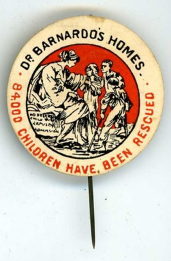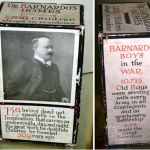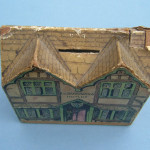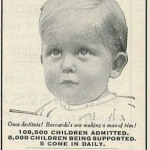 These WW1 charity “flag day” fundraising pin badges were sold during the Great War to raise money for a variety of causes; mainly supporting the troops fighting on the various fronts,
These WW1 charity “flag day” fundraising pin badges were sold during the Great War to raise money for a variety of causes; mainly supporting the troops fighting on the various fronts,  supporting the war effort, supporting wounded soldiers, widows etc.
supporting the war effort, supporting wounded soldiers, widows etc.
On Saturday 5th September 1914, Mrs Morrison (the founder of the World War One flag day movement) launched her first collection of the Great War. Three thousand six hundred collecting tins were issued and each collector carried a tray laden with flags. It soon became evident that the sellers with their red, white and blue scarves, and members of the Boys’ Brigade and Boy Scouts who assisted them, had entirely captured the sympathy of the public. she said.
The extraordinary success of Mrs Morrison’s flag day was widely noticed, and soon received letters from all parts of the country, she said, asking for information and assistance, as others were anxious to take up the idea, when it was seen how easily large sums could be obtained, by such a simple method.The holding of flag days as a rewarding means of raising money for worthy causes was proved for all to see. One of the most worthy of causes was that of raising money through the sale of penny-flags to help British prisoners of war in Germany.
 |
Dr. Barnardo’s “Pansies For Thoughts, Of The Largest Family In The Word” Pin Badge. Believed to be from around 1917. These were given to those who donated money to Charity Collectors, or into Money Boxes |
|
|
Dr. Barnardo’s “84,000 Children Have Been Saved” Pin Badge. Believed to be from around 1917. These were given to those who donated money to Charity Collectors, or into Money Boxes |
 |
Although most the boxes below are from the Dr. Barnardo Charity, Other childrens charities use similar items for raising funds for their work.
More details on these other charities will be posted soon. |
 |
 |
 |
 |
 |
| Dr. Barnardo’s Collection Boxes in the shape of a Dr. Barnrado’s Home Early ones were simple printed cardboard Boxes. Soon these would change to wooden, Papier Mache or ceramic ones. |
 |
Early Church Of England Collection box for the “Waifs And Strays Society” run by the Church Of England. |
Barnardo’s Helpers League. These shields were often placed in village halls, schools etc. to encourage fund raising.
For Each £100 collected a small disc was placed around the shield. Bear in mind, in the 1950s to 1960s, this £100 was a large amount to collect |
 |
 |
 |
 |
 |
| Out of all the children’s charities, Barnardo’s was the most prolific at using advertising to raise funds for their works. Many magazines and newspapers carried these adverts |
Just two of the thousands of orphans’ faces used for the Barnardo fund raising efforts |
A match cover and yet again orphans’ faces used for the Barnardo fund raising efforts |
 These WW1 charity “flag day” fundraising pin badges were sold during the Great War to raise money for a variety of causes; mainly supporting the troops fighting on the various fronts,
These WW1 charity “flag day” fundraising pin badges were sold during the Great War to raise money for a variety of causes; mainly supporting the troops fighting on the various fronts,  supporting the war effort, supporting wounded soldiers, widows etc.
supporting the war effort, supporting wounded soldiers, widows etc.












